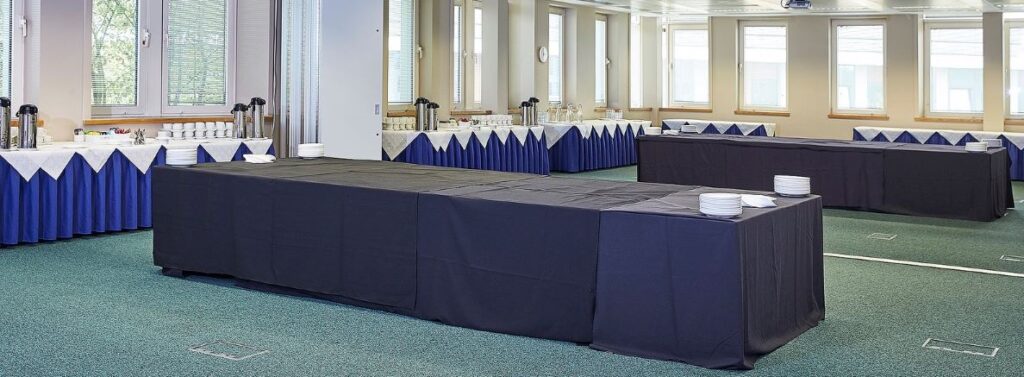
10 Ways to Ensure You Make an Impact in Meetings
In the corporate world, meetings are the lifeblood of effective communication, collaboration, and decision-making. Whether you’re hosting a meeting with management or facilitating an important client presentation, the effectiveness of your meetings can significantly impact your success. A productive meeting has the potential to leave a lasting impression, shaping the future endeavours of a company or professional group.
The effort invested in pre-meeting preparations can significantly influence the meeting’s success and its impact on attendees. While not every meeting will be transformative, you can cultivate an environment that fosters success. Here, we’ll explore ten essential ways to ensure your meetings make a lasting impact and leave a positive impression on everyone involved.
1. Meeting with Management: Set Clear Objectives
When it comes to meetings with management, clarity is key. Ensure that you establish clear and achievable objectives for the meeting. Define what you aim to accomplish and communicate these goals to the participants in advance. Having a well-defined purpose ensures that everyone is on the same page and can help in managing the meeting more effectively. Whether it’s a progress update or a strategic planning session, make sure you communicate the ‘why’ behind the meeting.
2. Prepare and Organise
Effective meeting preparation is the backbone of successful gatherings. Before the meeting, create a well-structured agenda that outlines the topics to be discussed, the time allocated to each, and the expected outcomes. Distribute the agenda ahead of time to allow participants to prepare, fostering a more productive discussion. Additionally, make sure all necessary materials, such as documents, presentations, and equipment, are ready and accessible. Well-organised meetings are more likely to be productive.
3. Management of Meeting: Encourage Participation
A productive meeting should not be a one-sided conversation. Encourage active participation from all attendees, especially during meetings with management. Make space for open discussions and contributions from all team members, regardless of their position. When participants feel heard and valued, it leads to more creative solutions and fosters a sense of ownership in the decisions made. Effective meeting management involves ensuring that all voices are heard and considered.
4. Keep It Time-Efficient
Time is precious in the business world, and no one likes wasting it in unproductive meetings. As the meeting facilitator, it’s your responsibility to manage the meeting’s time effectively. Stick to the agenda, allocate time for each agenda item, and gently guide the discussion to stay on track. When you manage a meeting efficiently, participants are more likely to view it as a valuable and worthwhile use of their time.
5. Meeting Effectiveness: Follow Up and Take Action
A meeting’s effectiveness extends beyond the conference room. After the meeting, ensure that action items and decisions are documented and communicated to all participants. Assign responsibilities and set deadlines for follow-up actions. A well-structured follow-up plan ensures that the meeting’s outcomes are implemented, and progress is monitored. This proactive approach showcases your commitment to making a real impact and delivering results.
6. Avoid Distractions
Humans are very physical creatures, and it’s easy for an entire lecture hall audience to be distracted by a relatively trivial matter, such as hard seating, a buzzing broken light or a problem with the sound system. Selecting an appropriate venue which is well maintained and comfortable will help your guests remove their attention from the physical, and focus on the presentations they are witnessing.
Comfort breaks and good meals are also essential, as these remove petty physical distractions, such as thirst and hunger. Good space management to avoid delays will also help. Make sure to silence your phone and avoid multitasking during the meeting. Focus solely on the discussion at hand.
7. Embrace Technology
Familiarise yourself with the technology used in virtual meetings, webinars, or conference calls. Give your speakers the chance to really stand out and convey their message dynamically. At Kents Hill, some of our events rooms are fitted with high-tech equipment, including light and sound equipment, as well as screens to show videos or images.
When used appropriately, these theatrical elements can dramatically increase the engagement of audiences, as well as make speakers more effective by letting them present their information in the ideal format. Remember to test your equipment and ensure a smooth technological experience.
8. Choose the Right Participants
As you plan your meetings, it’s crucial to assemble the right participants. In decision-making meetings, it often makes sense to keep the group smaller, focusing on key stakeholders who can swiftly reach decisions. On the other hand, in larger gatherings where the objective is to disseminate information across the entire company, provide updates to a sales team, or offer professional development opportunities to an association’s members, the key figures are typically those presenting.
These may include well-known experts who can convey their insights authoritatively, but it’s also valuable to identify individuals who possess excellent communication skills and have compelling ideas to share, even if their subject matter is more niche or unconventional. The key is to ensure that the people present are aligned with the meeting’s purpose and contribute positively to its goals.
9. Engage Your Audience
Engaging your audience is a powerful way to enhance their connection with the topic at hand. There are two effective methods for achieving this: hands-on involvement, which is ideal when you’re introducing a new product or technology and encourages participants to try it themselves, and group discussions and debates, particularly effective for exploring new methodologies and policies. To facilitate these interactive elements, it’s wise to consider booking both a large lecture hall to accommodate the entire group and one or more smaller rooms for hands-on demonstrations and seminars.
10. Choose the Right Venue
At Kents Hill Park, we offer an array of options with our 70 meeting rooms and event spaces. This diversity enables us to tailor the ideal combination of rooms to suit your specific meeting requirements, whether you have a small group of 10 or a larger conference of 600. For more information and to explore these possibilities, please feel free to contact our dedicated events team. We’re here to assist you in making your meeting both engaging and impactful.
Other Things to Consider to Make an Impact in Meetings
Being impactful in meetings is essential for professional success. Here are some other strategies to help you make a lasting impression and contribute effectively in meetings:
Arrive Early and Engage
- Arriving a few minutes early allows you to settle in and be better prepared.
- Greet other participants and engage in small talk to build rapport.
Listen Actively
- Pay close attention to what others are saying.
- Avoid interrupting or forming your response before the other person has finished speaking.
- Show that you value their contributions by nodding, making eye contact, or asking clarifying questions.
Speak with Clarity
- When you do speak, be clear and concise in your communication.
- Organise your thoughts before you speak, so your points are easy to understand.
Provide Value
- Offer insights, solutions, or suggestions that add value to the discussion.
- Share relevant examples or experiences to support your points.
Use Positive Body Language
- Maintain good posture and sit up straight.
- Use open and inviting body language to convey engagement and confidence.
Ask Questions
- Encourage discussion by asking open-ended questions.
- Seek clarification when needed or request input from others to involve them in the conversation.
Respect Others’ Contributions
- Acknowledge and appreciate the ideas and opinions of your colleagues.
- Avoid criticising or dismissing their input, even if you disagree.
Be Adaptable
- Be open to new ideas and willing to change your perspective if presented with a compelling argument.
- Flexibility and adaptability can help you navigate unexpected twists in the discussion.
Confidence, Not Arrogance
- Project confidence in your abilities and contributions, but avoid coming across as arrogant or overbearing.
Dress Professionally
- Dress appropriately for the meeting, considering the company’s culture and the meeting’s formality.
How to Ensure Your Meetings Make An Impact Conclusion
In conclusion, meetings are a crucial part of corporate life, and their effectiveness can greatly influence your success in the business world. By approaching meetings with clarity, preparation, participation, time management, and follow-up, you can ensure that your meetings are not just productive but also leave a lasting impact.
Remember that being impactful in meetings is not about dominating discussions but contributing meaningfully and positively to achieve the meeting’s objectives. By following these strategies, you can enhance your presence, build your reputation as a valuable team member, and leave a lasting impact on your colleagues and superiors.
Go back to other articles

